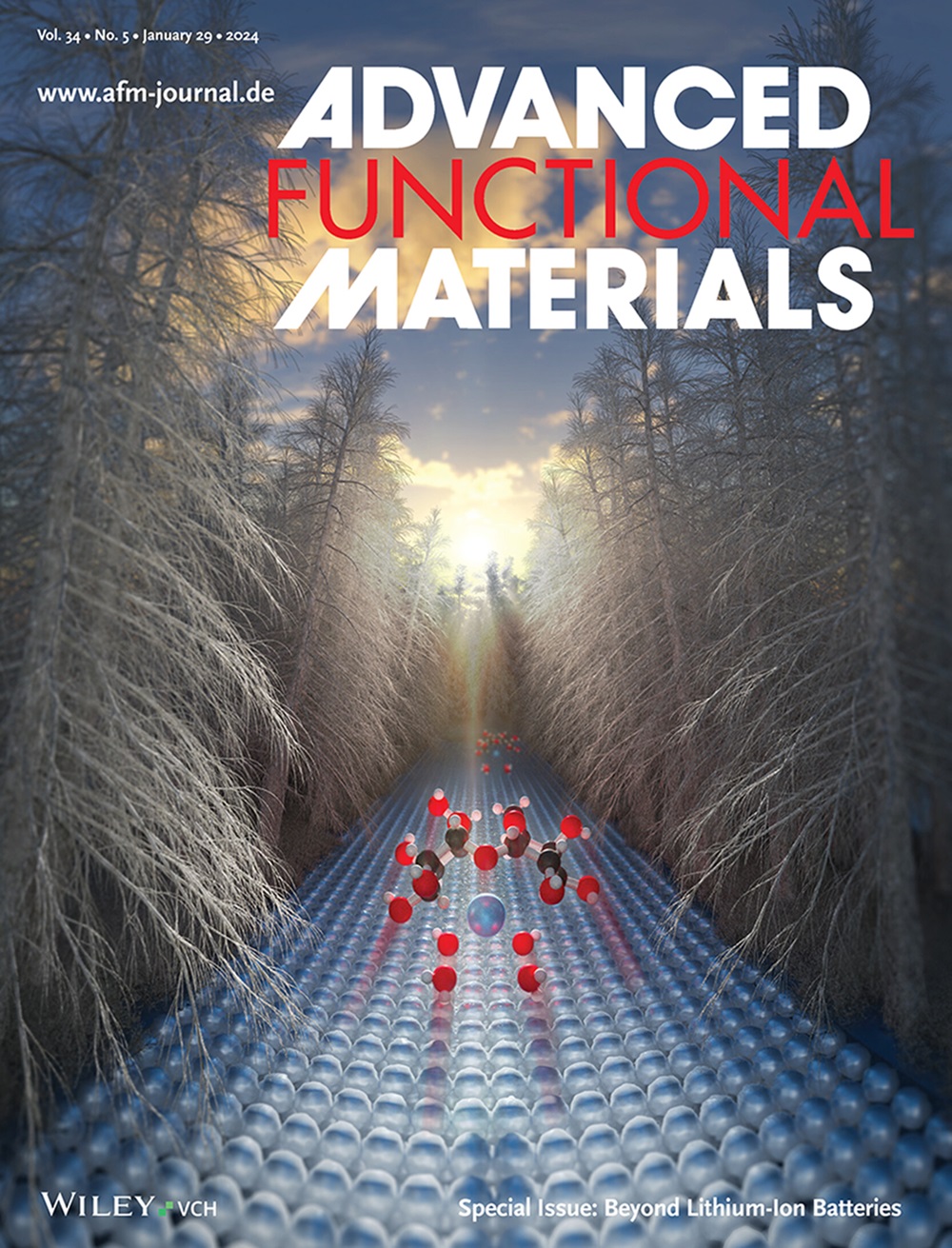溶剂化结构中的均匀电子云使高性能钠离子电池成为可能
IF 19
1区 材料科学
Q1 CHEMISTRY, MULTIDISCIPLINARY
引用次数: 0
摘要
电解质是钠离子电池(sib)的关键组成部分,需要高离子电导率、宽工作温度范围、高电压能力和形成有效界面的能力。在这项研究中,开发了一种超稳定的溶剂化结构,其中两个三乙二醇二甲醚(G3)分子垂直排列并紧密包裹在Na⁺周围。这种构型保证了电子云的均匀分布,从而产生了高的结合能和小的静电电位(ESP)差,从而显著提高了氧化和还原稳定性。因此,所制备的电解质对Na+/Na表现出超过5 V的高电压稳定性,固体电解质间相(SEI)层主要来自阴离子和添加剂。结果表明,硬碳(HC)、Na3V2(PO4)3 (NVP)、Na4Fe3(PO4)2P2O7 (NFPP)和高压阴极Na3V2(PO4)2F3 (NVPF)等电极在室温下可以稳定循环500和1500次以上,容量衰减可以忽略,即使在- 20℃下也可以稳定循环500次以上,容量保持率为99.2%。此外,它们还表现出惊人的速率性能。此外,NVP||HC和商用NFPP||HC袋状全电池在500次循环后,库仑效率(CE)超过99.9%,容量保持率为89.2%。这项工作为高性能sib和其他阳离子基电池的开发提供了一条创新途径。本文章由计算机程序翻译,如有差异,请以英文原文为准。
Uniform Electron Clouds in Solvation Structures Enable High‐Performance Sodium‐Ion Batteries
Electrolytes are critical components of sodium‐ion batteries (SIBs), requiring high ionic conductivity, a wide operating temperature range, high voltage capability, and the ability to form an effective interphase. In this study, an ultra‐stable solvation structure is developed, where two triethylene glycol dimethyl ether (G3) molecules are arranged perpendicularly and tightly wrapped around Na⁺. This configuration ensures an even distribution of electron clouds, resulting in high binding energy and small electrostatic potential (ESP) difference, which significantly enhances oxidative and reductive stability. Consequently, the developed electrolyte demonstrates high‐voltage stability exceeding 5 V versus Na+ /Na, and the solid electrolyte interphase (SEI) layer is predominantly derived from anion and additive. As a result, electrodes such as hard carbon (HC), Na3 V2 (PO4 )3 (NVP), Na4 Fe3 (PO4 )2 P2 O7 (NFPP) and high‐voltage cathode Na3 V2 (PO4 )2 F3 (NVPF) can cycle stably for over 500 and 1500 cycles with negligible capacity decay at room temperature, and over 500 cycles with 99.2% capacity retention even at −20 °C. Furthermore, they also show a surprising rate performance. Additionally, NVP||HC and commercial NFPP||HC pouch full cell can exhibit a high Coulombic Efficiency (CE) exceeding 99.9% with 89.2% capacity retention after 500 cycles. This work provides an innovative pathway for the development of high‐performance SIBs and other cation‐based batteries.
求助全文
通过发布文献求助,成功后即可免费获取论文全文。
去求助
来源期刊

Advanced Functional Materials
工程技术-材料科学:综合
CiteScore
29.50
自引率
4.20%
发文量
2086
审稿时长
2.1 months
期刊介绍:
Firmly established as a top-tier materials science journal, Advanced Functional Materials reports breakthrough research in all aspects of materials science, including nanotechnology, chemistry, physics, and biology every week.
Advanced Functional Materials is known for its rapid and fair peer review, quality content, and high impact, making it the first choice of the international materials science community.
 求助内容:
求助内容: 应助结果提醒方式:
应助结果提醒方式:


